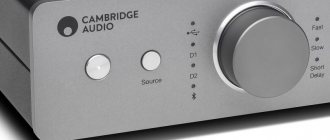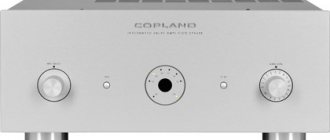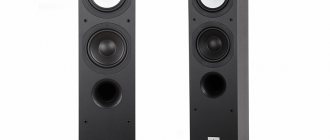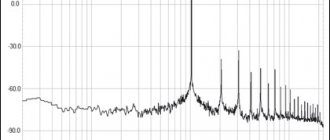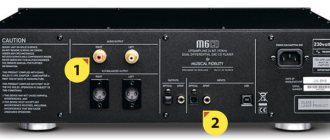What's bad about the Cambridge Audio 851A amplifier?
Without detracting from the 851A's merits, and in my opinion it is a serious choice, it must be said that all of this does little to understand whether it will be better in practice or not. In the 1990s, Technics amplifiers used what was known as “Class AA.” Here's what they write about it:
“Class AA is a special structure of the UMZCH, which allows you to reduce distortion. The essence of the class AA structure is that a high-power amplifier is controlled by the voltage taken from a resistor connected between the output of the low-power amplifier and the load (i.e., the resistor is a current sensor). The output of the high-power amplifier is connected to the load and produces almost all of the current in the load, the voltage across which is determined by the low-power amplifier. From the low-power amplifier, only the current necessary to create the required control voltage for the high-power amplifier on the sensor resistor is taken. The magnitude of this current (and the required voltage across the sensor resistor) depends on the gain of the powerful amplifier. Thus, both amplifiers operate the load in parallel (low-power - through a resistor-sensor). The OOS voltage is removed from the load and supplied to the input of a low-power amplifier. Such a structure can be an alternative to a class A+ amplifier, because does not have some of its disadvantages. In class A+, the power in the load is created by connecting two amplifiers in series, and in class AA - in parallel.
Class AA amplifiers can also be thought of as a special version of the amplifier with “forward coupling”, because a low-power amplifier controls a high-power amplifier and simultaneously supplies current to the load.”
and further:
“The proposed version of the “AA” mode amplifier (we emphasize that the amplifier operates in a non-amplification class) seems to successfully combine the advantages of both amplification classes while simultaneously controlling the load. At the moment of maximum signal, the load is controlled by power amplifier A2, operating in the amplification class “B” mode ", and with minimal signals, load control is taken over by voltage amplifier A1, operating in class “A” amplification mode. This combines the maximum achievable power in the signal peaks without the influence of the DC component, on the one hand, and high linearity when switching the arms of the output stage of the power amplifier, on the other.” (Radio, No. 5, 1998)
It seems that everything is great, but many people know firsthand what Technics amplifiers are. A very interesting technical idea and disgusting implementation. Therefore, the sound was clear, detailed, but it lacked drive and pressure. Still, in my opinion, the best tester is your own ears; they will definitely tell you whether the advertised move of the designers is worth the money requested for it.


